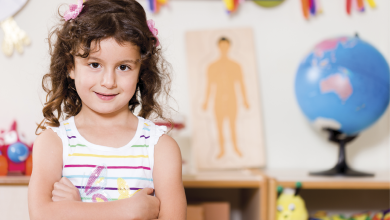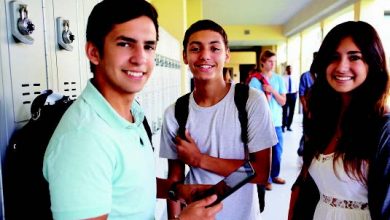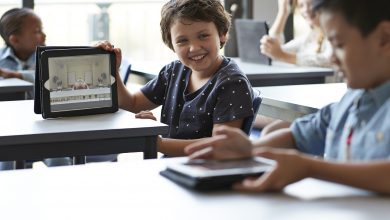Introducción
Muchos factores pueden afectar la capacidad de un estudiante para participar plenamente y beneficiarse de las actividades del aula. Algunas son de naturaleza física y bastante obvias: el niño usa una silla de ruedas o está acompañado por un animal de apoyo. Algunas no lo son tanto: sordera parcial, discapacidad visual o afecciones relacionadas con el habla. Otras indisposiciones son de origen neurológico. El cerebro del estudiante funciona de manera diferente, lo que resulta en desafíos específicos de aprendizaje. Estas circunstancias son más difíciles de identificar o pueden ser enteramente invisibles excepto bajo condiciones específicas. Este capítulo trata de equipar al profesor para que proporcione ayuda a los estudiantes con necesidades especiales, particularmente donde hay poca ayuda externa disponible.
Cómo atender las necesidades especiales del estudiante
Todos los estudiantes, en el sentido más literal, son estudiantes con necesidades especiales; tienen fortalezas y debilidades individuales, y se desarrollan y aprenden a diferentes ritmos. Sin embargo, “estudiantes con necesidades especiales” son niños con afecciones o discapacidades que tienen un impacto negativo significativo en su capacidad para tener éxito en las escuelas en circunstancias normales. La política de educación actual favorece el uso del mismo currículo para los estudiantes de todas las habilidades, que se adapta para satisfacer diversos requerimientos en lugar de crear un entorno de aprendizaje paralelo. Los niños con necesidades especiales no tienen que ir a escuelas especiales; en la mayoría de los casos, pueden asistir a una escuela regular y hacerlo bien allí, siempre que se hagan adaptaciones menores para ayudarles. Esta práctica de enseñar a los estudiantes con necesidades especiales en el aula principal en vez de ponerlos en una escuela o programa separado se llama “integración educativa” o “inclusión”. Se basa en el principio de la “normalización”, según el cual todos, sin importar la capacidad, deberían vivir y aprender en entornos lo más cercanos posible a lo normal (Wolfensberger y Nirje, 1975). El objetivo principal del profesor debe ser dar al niño con necesidades especiales el mejor apoyo posible, con la limitación de las oportunidades educativas que damos al resto de la clase. Debemos contribuir al bienestar de los estudiantes con necesidades especiales asegurando su seguridad, dignidad, independencia y acceso a la educación. Un estudiante con necesidades especiales debe tener los mismos derechos, responsabilidades y oportunidades que los otros estudiantes en el grupo.
 Tomando acción
Tomando acción
El primer paso hacia la provisión de apoyo para alumnos con necesidades especiales es tener una actitud de bienvenida y aceptación igual que hacia los niños sin discapacidades, y al menos una conciencia básica de las condiciones comunes y las discapacidades. También es de ayuda conocer los recursos disponibles en la comunidad, como organizaciones, terapeuta ocupacional y servicios médicos y de salud mental. El siguiente paso es observar a los estudiantes mientras desarrollan sus actividades escolares:
- ¿Hay algún estudiante quedándose rezagado?
- ¿Los estudiantes dejan de participar frecuentemente en algunas o todas las actividades (no prestar atención, no hacerse cargo de la tarea, ver calladamente sin participar)?
- ¿Algunos estudiantes demuestran falta de destrezas y habilidades apropiadas para su edad, como la capacidad de sostener un lápiz y armar cartas, usar la tijera o seguir instrucciones de varios pasos?
- ¿Están los estudiantes inusualmente inquietos (moviendo constantemente sus cuerpos u objetos cercanos)?
- ¿Están los estudiantes regularmente en ánimo perturbador (hablando fuera de turno, participando en conductas negativas de búsqueda de atención, demostrando desafío)?
Algunas necesidades especiales son más evidentes que otras; si un estudiante parece estar luchando, es importante investigar el asunto. En muchos casos, el impacto negativo de una discapacidad puede reducirse si se presta apoyo a tiempo. Hable con los padres del niño y con otro de sus maestros para ver si tienen problemas similares o relacionados. (Cuando hable con los padres, asegúrese de hacer hincapié en que el niño NO está en problemas.) A menudo tendrá que recomendar que el niño vea un profesional si es posible. Como maestro, no puede diagnosticar una afección o prescribir tratamiento; en muchos casos, las necesidades del estudiante son complejas. Un estudiante puede parecer tener un trastorno de déficit de atención e hiperactividad, pero en realidad puede tener una forma de autismo, o un problema de salud, como el envenenamiento por plomo, que conduce a un comportamiento inusual. El diagnóstico correcto es importante para proporcionar la asistencia adecuada al niño. Sin embargo, por muchas razones diferentes, un diagnóstico profesional no siempre es posible. Los padres pueden no tener los recursos financieros para evaluar al niño, o un especialista puede no estar disponible en el área local. Algunos padres se muestran reticentes a aceptar que su hijo tiene una discapacidad, incluso si es una que puede ser tratada. A menudo hay estigmas sociales asociados con ciertas afecciones, y los padres pueden responder negativamente o dejar de responder en absoluto. En estas situaciones, la observación cuidadosa (documentando las dificultades de aprendizaje y las circunstancias en las que ocurren), la investigación, la resolución de problemas y los diálogos son instrumentos importantes en la caja de herramientas del maestro. Con o sin un diagnóstico, usted todavía puede responder a las necesidades observadas en el niño mediante la incorporación de las adaptaciones de los materiales educativos y el entorno del aula.
Acomodaciones
Las acomodaciones son cambios en el ambiente de la clase y en la forma de instrucción (estilo de presentación, oportunidad y arreglos de prueba) que aumentan el acceso del estudiante a la educació n; permiten al estudiante ser incluido y beneficiarse de actividades regulares. Las acomodaciones generales que puede probar con muchos estudiantes con necesidades especiales incluyen:
n; permiten al estudiante ser incluido y beneficiarse de actividades regulares. Las acomodaciones generales que puede probar con muchos estudiantes con necesidades especiales incluyen:
- Garantizar que los estudiantes puedan acceder a las instalaciones escolares (aula, baño, áreas comunes, etc.) y se sientan cómodos en el aula.
- Sentar los estudiantes en un lugar que les sea conveniente, especialmente para ver el grupo y participar en las actividades del aula.
- Colocar los materiales de la clase en un lugar que sea de fácil acceso para los estudiantes.
- Emparejar a los alumnos con un compañero de clase que pueda ayudar con algunas tareas: leer instrucciones en voz alta, modelar una actividad, etc.
- Ofrecer instrucción individual o en grupos pequeños a los estudiantes con dificultades.
- Proporcionar ayuda adicional para que los niños desarrollen en casa.
- Asegurar que las instrucciones de la actividad sean claras y directas.
- Usar múltiples formas de expresar un significado: visual, auditivo, gesto de texto, etc.
- Dividir las tareas más grandes y complejas en pasos cortos y manejables.
- Ofrecer tiempo adicional para completar las tareas.
- Reducción de la cantidad de trabajo (artículos o página) asignados.
- Dar descansos.
- Cambiar el formato de la prueba para que realmente midan el progreso del estudiante y no su grado de discapacidad. Considere las pruebas:
- En otro momento del día.
- En un entorno de grupos pequeños.
- En un lugar alternativo.
- Sin límite de tiempo, o con un plazo menos restrictivo.
- Con modelos y ejemplos adicionales.
Intervenciones
Las intervenciones son estrategias y habilidades adicionales de lo que normalmente se enseña. La intervención ayuda al joven a desarrollar habilidades académicas, sociales y conductuales, que le permiten alcanzar los objetivos de aprendizaje. Como ejemplos se incluye:
- Enseñar al estudiante a pedir ayuda y expresar sus necesidades al maestro. (Algunos estudiantes pueden no darse cuenta de que pueden pedir ir al baño, o mencionar que están sedientos o se sienten enfermos.) Las tarjetas de fotos que ilustran necesidades comunes pueden ser útiles.
- Proporcionar horarios ilustrados y listas de reglas.
- Trabajar con los estudiantes para aumentar su capacidad de permanecer en la tarea durante intervalos de tiempo más largos.
- Enseñar estrategias de autotranquilización a los estudiantes que experimentan angustia o ansiedad en el aula.
Debido a que las intervenciones están dirigidas a desarrollar las habilidades de los estudiantes, cambian con el tiempo a medida que él desarrolla nuevas fortalezas y a medida que surgen nuevas necesidades.
Modificaciones
Las modificaciones son cambios en los objetivos o metas de aprendizaje para un estudiante con necesidades especiales (Centro Nacional de Diseminación para Niños con Discapacidades [NICHCY Disability Fact Sheet 3], 2010). La modificación puede ser necesaria para estudiantes con discapacidades cognitivas moderadas a severas, principalmente proporcionando instrucción separada y estándares más accesibles. Sin embargo, éstos deben aplicarse con precaución. Existe el riesgo de tener expectativas demasiado bajas y de excluir innecesariamente a un niño de actividades regulares. Es importante no renunciar a otras estrategias prematuramente. Se necesita tiempo para desarrollar un conjunto eficaz de adaptaciones a través de la continuada resolución de problemas; es un proceso de prueba y error. Consulte con los padres, médicos y las cosas de la escuela antes de determinar que un estudiante no puede progresar, incluso después de implementar acomodaciones e intervenciones. RM
Introduction
Many Conditions can affect a student’s ability to fully participate in and benefit from classroom activities. Some are physical in nature, and immediately apparent: the child uses a wheelchair or is accompanied by a service animal. Some are not obvious: partial deafness, visual impairment or speech-related conditions. Other conditions are neurological in origin; the student’s brain functions differently, resulting in specific learning challenges. These conditions are harder to identify, or may be entirely invisible except under specific circumstances. This chapter attempts to equip the teacher to provide assistance to students with special needs, particularly where little outside help is available.
Addressing Student’s Special needs
All students, in the most literal sense, are special needs students; they have individual strengths and weaknesses, and they develop and learn at different rates. However, “special needs students” are children with conditions or disabilities that have a significant negative impact in their ability to succeed in schools under normal circumstances. Current education policy favors the use of the same curriculum for students of all abilities, adapting it to meet various needs rather than creating a parallel learning environment. Children with special do not necessarily need to go to special school; in most cases, the can attend a regular school and do well there, providing that minor adaptation are made to help them. This practice of teaching special needs students in mainstream classroom rather than putting them in a separate school or program is called “educational integration” or “inclusion”. It is based on the principal of “normalization,” that everyone no matter the ability should live and learn in environments as close to normal as possible (Wolfensberger & Nirje, 1975). The main goal of the teacher should be to give the special needs child the best possible support with limiting the educational opportunities we give to the rest of the class. We should contribute towards the well-being of the special needs student by ensuring their safety, dignity, independence, and access to education. A special needs student should have the same rights, responsibilities and opportunities as the other students in the group.
In some schools, there is a special education teacher who can provide additional support and the regular classroom teacher. Some schools, though, do not have special education teachers. They may rely on a schools psychologist to help out with or give advice about children. In other schools, teachers may have to find their own resources for addressing the needs of students with disabilities.
Taking action
The first step towards providing support for special needs student is to have a welcoming, accepting attitude towards children of all abilities and at least a basic awareness of common condition and disabilities. It also helps to know about resources that are available in the community, such as, organizations, occupational therapist, and medical and behavioral health services. The next step is to observe the students as they go about their schools activities:
- Are any students falling behind?
- Do any students routinely withdraw from participating in some or all activities (not paying attention, getting off task, watching quietly without participating)?
- Do any students demonstrate a lack of age-appropriate skills and abilities, such as, the ability to hold a pencil and form letters, use the scissor, or follow multi-steps instructions?
- Are any students unusually fidgety (constantly moving the bodies or nearby objects)?
- Are any students regularly disruptive (talking out of turn, engaging in negative attention-seeking behaviors, demonstrating defiance)?
Some special needs are more apparent than other is if a student seems to be struggling, it is important to investigate the matter. In many cases, the negative impact of a disability can be reduce if support is provided early on. Speak with the child’s parents and his/her other teacher to see if they have similar or related concerns. (When you talk with parents, be sure to emphasis that the child is not in trouble.) You will often need to recommend that the child see a professional if at all possible. As a teacher, you cannot diagnose a condition or prescribe treatment; in many cases, student’s needs are complex. A student may appear to have Attention-Deficit and Hyper activity Disorder, but may actually have a form of autism, of a health problem, such as lead poisoning, that leads to unusual behavior. The right diagnosis is important to providing appropriate assistance to the child. However, for many different reasons, a professional diagnosis is not always possible. The parents may have not the financial resources to get the child evaluated, or a specialist may not be available in the local area. Some parents are hesitant to accept that their child has a disability, even if it is one that can be treated. There are often stigmas associated with certain conditions, and parents may respond negatively, or fail to respond at all. (In some cases, even if professional evaluation is available, the result may be inconclusive.) I these situations, careful observation (documenting learning difficulties and circumstances in which they occur), research, problem solving, and dialogues are important tools in your teacher’s toolbox. With or without a diagnosis, you can still respond to the child’s observed needs by incorporating adaptations of educational materials and the classroom environment.
activity Disorder, but may actually have a form of autism, of a health problem, such as lead poisoning, that leads to unusual behavior. The right diagnosis is important to providing appropriate assistance to the child. However, for many different reasons, a professional diagnosis is not always possible. The parents may have not the financial resources to get the child evaluated, or a specialist may not be available in the local area. Some parents are hesitant to accept that their child has a disability, even if it is one that can be treated. There are often stigmas associated with certain conditions, and parents may respond negatively, or fail to respond at all. (In some cases, even if professional evaluation is available, the result may be inconclusive.) I these situations, careful observation (documenting learning difficulties and circumstances in which they occur), research, problem solving, and dialogues are important tools in your teacher’s toolbox. With or without a diagnosis, you can still respond to the child’s observed needs by incorporating adaptations of educational materials and the classroom environment.
Accommodations
Accommodations are changes in the classroom environment and in the manner of instructions (presentation style, timing, and testing arrangements) that increase the student’s access to education; they allow the student to be included in and benefit from regular activities. General accommodations you can try with many special students include:
- Ensuring that the students can access school facilities (classroom, the bathroom, common areas, etc.) and is comfortable in the classroom.
- Seating the students in a location that is convenient for him or her, especially for seeing the board and participating in classroom activities.
- Placing classroom supplies in a place that is easy for the students to access.
- Pairing the students with a classmate who can help with some tasks: reading instructions aloud, modeling an activity, etc.
- Offering individual or small-group instruction to students with difficulties.
- Providing additional support activates for students to do at home.
- Ensuring that activity instructions are clear and straightforward.
- Using multiple ways to express meaning: visual, auditory, text gesture, etc.
- Breaking larger, more complex tasks into short, manageable steps.
- Offering extra time to complete assignments.
- Reducing the amount of work (Items or page) assigned.
- Giving breaks.
- Changing the format of test so that they truly measure the student’s progress and not his or her degree of disability. Consider testing:
- At a different time of day.
- In a small-group setting.
- At an alternative location.
- Without a time limit, or with a less restrictive time limit.
- With extra models and examples.
Interventions
Interventions are extra strategies and skills in addition to what is typically taught. Intervention help the student to build academic, social, and behavioral skill, enabling the student to reach learning objectives. Examples include:
- Teaching the student to ask for help and express his or her needs to the teacher. (Some students may not realize that they can ask to go to the bathroom, or mention that they are thirsty or feel ill.) Pictures cards that illustrate common needs may be helpful.
- Providing illustrated schedules and lists of rule.
- Working with students on increasing their ability to remain on task for longer intervals of time.
- Teaching self-calming strategies to students who experience distress or anxiety in the classroom.
Because interventions are aimed at building the students’ skills, they change over time as the student develops new strengths, and as new needs arise.
Modifications
Modifications are changes made to the learning objectives or goals for a special need student (National Dissemination Center for Children with Disabilities [NICHCY Disability Fact Sheet 3], 2010). Modification may be necessary for students with moderate to severe cognitive disabilities, mainly through providing separate instruction and more accessible standards. However, these should be applied with caution. There is a risk of having overly low expectations and of unnecessary excluding a child from regular activities. It is important not to give up on other strategies prematurely. It takes time to develop an effective set of accommodations through continued problem solving; it is a trial-and-error process. Consult with parents, medical professionals, and school stuff before determining that a student cannot progress even after implementing accommodations and interventions. RM





